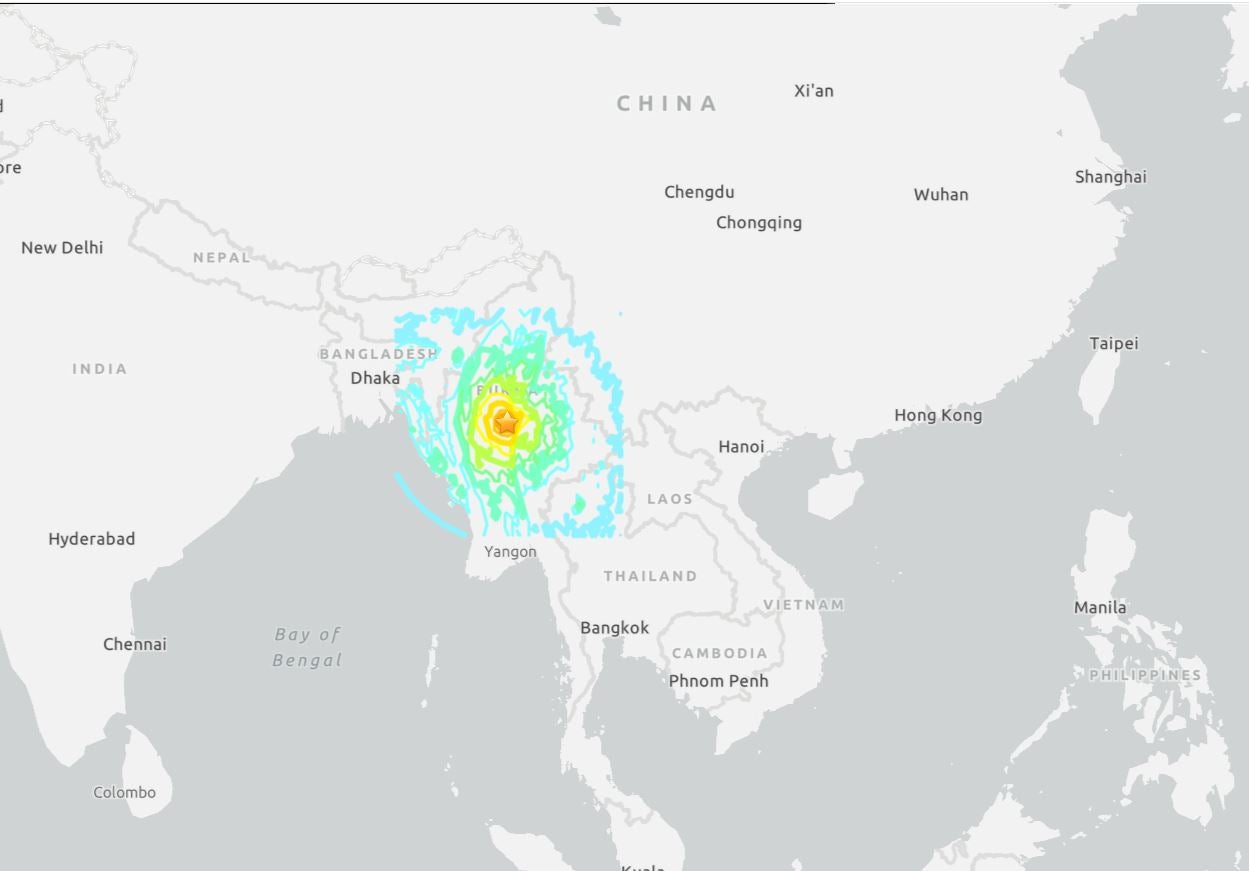A massive 7.7-magnitude earthquake has killed at least 1,650 people in Myanmar and Thailand, leaving the region reeling as rescuers pick through vast piles of rubble to find missing people.
Thousands streamed out of their buildings in scenes of panic and chaos after the quake struck at around midday on Friday, causing numerous structures to come crashing down in one of the worst earthquakes the region has seen.
The scale of damage in Myanmar, which has recorded 1,644 deaths and 2,376 injuries, appears to be devastating. Religious buildings, roads, hospitals and bridges have collapsed, with the UN’s humanitarian agency warning on Saturday that it was struggling to get aid to areas in need due to damage to Myanmar’s infrastructure.
In Bangkok, rescue efforts for dozens of missing people continued into their second day, after a skyscraper under construction collapsed in a huge plume of dust as onlookers screamed and ran from the site. Bangkok authorities on Saturday revised the number of deaths down from 10 to six, while 26 people have been injured and 47 others are missing at sites across the city.
As rescuers continue working to save people trapped under the rubble, here’s a look at how and why the earthquake happened in Myanmar.
What happened and why?
At around 6am GMT, a huge quake was recorded in the centre of Myanmar.
The quake, which had a depth of 6.2 miles (10km) and was centred about 10.3 miles (17km) from Myanmar’s second-largest city of Mandalay, was followed by a strong 6.4-magnitude aftershock.
Earthquakes strike when tectonic plates, the large rocks making up the Earth’s crust, rub against each other. The USGS says the Myanmar quake occurred due to “strike slip faulting” between the India and Eurasia plates - which Myanmar sits on top of.

Are earthquakes common in Myanmar?
Sitting on the boundary between two tectonic plates, Myanmar is one of the most seismically active countries in the world.
But earthquakes of such magnitude are rare in the heavily-affected Sagaing region.
"The plate boundary between the India Plate and Eurasia Plate runs approximately north-south, cutting through the middle of the country," said Joanna Faure Walker, a professor and earthquake expert at University College London.
Plates move past each other horizontally at different speeds. While this causes “strike slip” quakes which aren’t as powerful as those seen in “subduction zones”, they still have the capacity to hit magnitudes of 7 to 8.

Why was the earthquake so damaging?
While Sagaing has been hit by several quakes in recent years, including a 6.8-magnitude quake killing at least 26 in 2012, Friday’s event was “probably the biggest” to hit Myanmar’s mainland in 75 years, according to UCL earthquake expert Bill McGuire.
The shallow depth of the quake meant the damage would be more severe, honorary research fellow at the British Geological Survey Roger Musson said.
"This is very damaging because it has occurred at a shallow depth, so the shockwaves are not dissipated as they go from the focus of the earthquake up to the surface. The buildings received the full force of the shaking.

"It's important not to be focused on epicentres because the seismic waves don't radiate out from the epicentre - they radiate out from the whole line of the fault," he added.
Was Myanmar prepared?
Fatalities could range between 10,000 and 100,000 people, the USGS Earthquake Hazards Program said using data based on Myanmar’s size, location and overall quake readiness.
Infrastructure has not been built to withstand large-scale quakes in the Sagaing region due to the relative rarity of large seismic events - meaning the damage could be catastrophic.
Mr Musson said that the last major quake to hit the region was in 1956, and homes are unlikely to have been built to withstand seismic forces as powerful as those that hit on Friday.
"Most of the seismicity in Myanmar is further to the west whereas this is running down the centre of the country," he said.
What you need to know about the deadly earthquake that hit Myanmar
Mapped: The regions hit worst by 7.7-magnitude earthquake in Myanmar and Thailand
Woman gives birth to baby girl as hospital was evacuated during Myanmar earthquake
Eid al-Fitr: Why do Muslims celebrate it and how can you wish someone a Happy Eid?
‘Inhumane’ Myanmar military continues airstrikes after devastating earthquake
Myanmar earthquake survivors dig through rubble with bare hands as death toll soars







